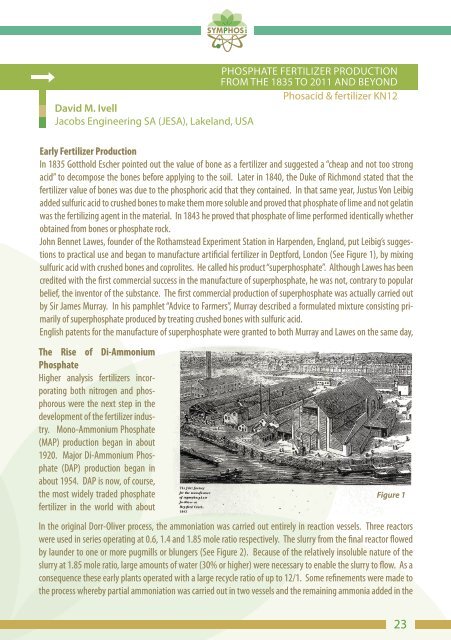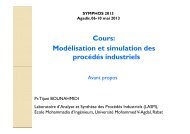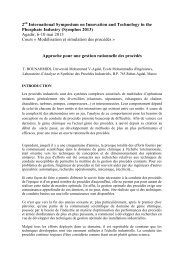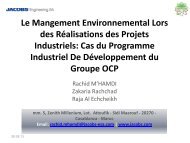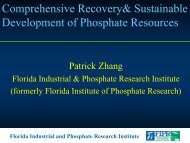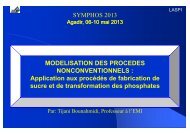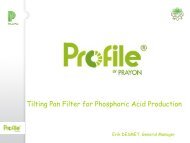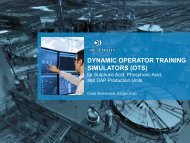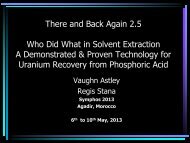Abstract SYMPHOS 2011
Abstract SYMPHOS 2011
Abstract SYMPHOS 2011
Create successful ePaper yourself
Turn your PDF publications into a flip-book with our unique Google optimized e-Paper software.
PHOSPHATE FERTILIZER PRODUCTION<br />
FROM THE 1835 TO <strong>2011</strong> AND BEYOND<br />
Phosacid & fertilizer KN12<br />
David M. Ivell<br />
Jacobs Engineering SA (JESA), Lakeland, USA<br />
Early Fertilizer Production<br />
In 1835 Gotthold Escher pointed out the value of bone as a fertilizer and suggested a “cheap and not too strong<br />
acid” to decompose the bones before applying to the soil. Later in 1840, the Duke of Richmond stated that the<br />
fertilizer value of bones was due to the phosphoric acid that they contained. In that same year, Justus Von Leibig<br />
added sulfuric acid to crushed bones to make them more soluble and proved that phosphate of lime and not gelatin<br />
was the fertilizing agent in the material. In 1843 he proved that phosphate of lime performed identically whether<br />
obtained from bones or phosphate rock.<br />
John Bennet Lawes, founder of the Rothamstead Experiment Station in Harpenden, England, put Leibig’s suggestions<br />
to practical use and began to manufacture artificial fertilizer in Deptford, London (See Figure 1), by mixing<br />
sulfuric acid with crushed bones and coprolites. He called his product “superphosphate”. Although Lawes has been<br />
credited with the first commercial success in the manufacture of superphosphate, he was not, contrary to popular<br />
belief, the inventor of the substance. The first commercial production of superphosphate was actually carried out<br />
by Sir James Murray. In his pamphlet “Advice to Farmers”, Murray described a formulated mixture consisting primarily<br />
of superphosphate produced by treating crushed bones with sulfuric acid.<br />
English patents for the manufacture of superphosphate were granted to both Murray and Lawes on the same day,<br />
The Rise of Di-Ammonium<br />
Phosphate<br />
Higher analysis fertilizers incorporating<br />
both nitrogen and phosphorous<br />
were the next step in the<br />
development of the fertilizer industry.<br />
Mono-Ammonium Phosphate<br />
(MAP) production began in about<br />
1920. Major Di-Ammonium Phosphate<br />
(DAP) production began in<br />
about 1954. DAP is now, of course,<br />
the most widely traded phosphate<br />
fertilizer in the world with about<br />
Figure 1<br />
In the original Dorr-Oliver process, the ammoniation was carried out entirely in reaction vessels. Three reactors<br />
were used in series operating at 0.6, 1.4 and 1.85 mole ratio respectively. The slurry from the final reactor flowed<br />
by launder to one or more pugmills or blungers (See Figure 2). Because of the relatively insoluble nature of the<br />
slurry at 1.85 mole ratio, large amounts of water (30% or higher) were necessary to enable the slurry to flow. As a<br />
consequence these early plants operated with a large recycle ratio of up to 12/1. Some refinements were made to<br />
the process whereby partial ammoniation was carried out in two vessels and the remaining ammonia added in the<br />
23


